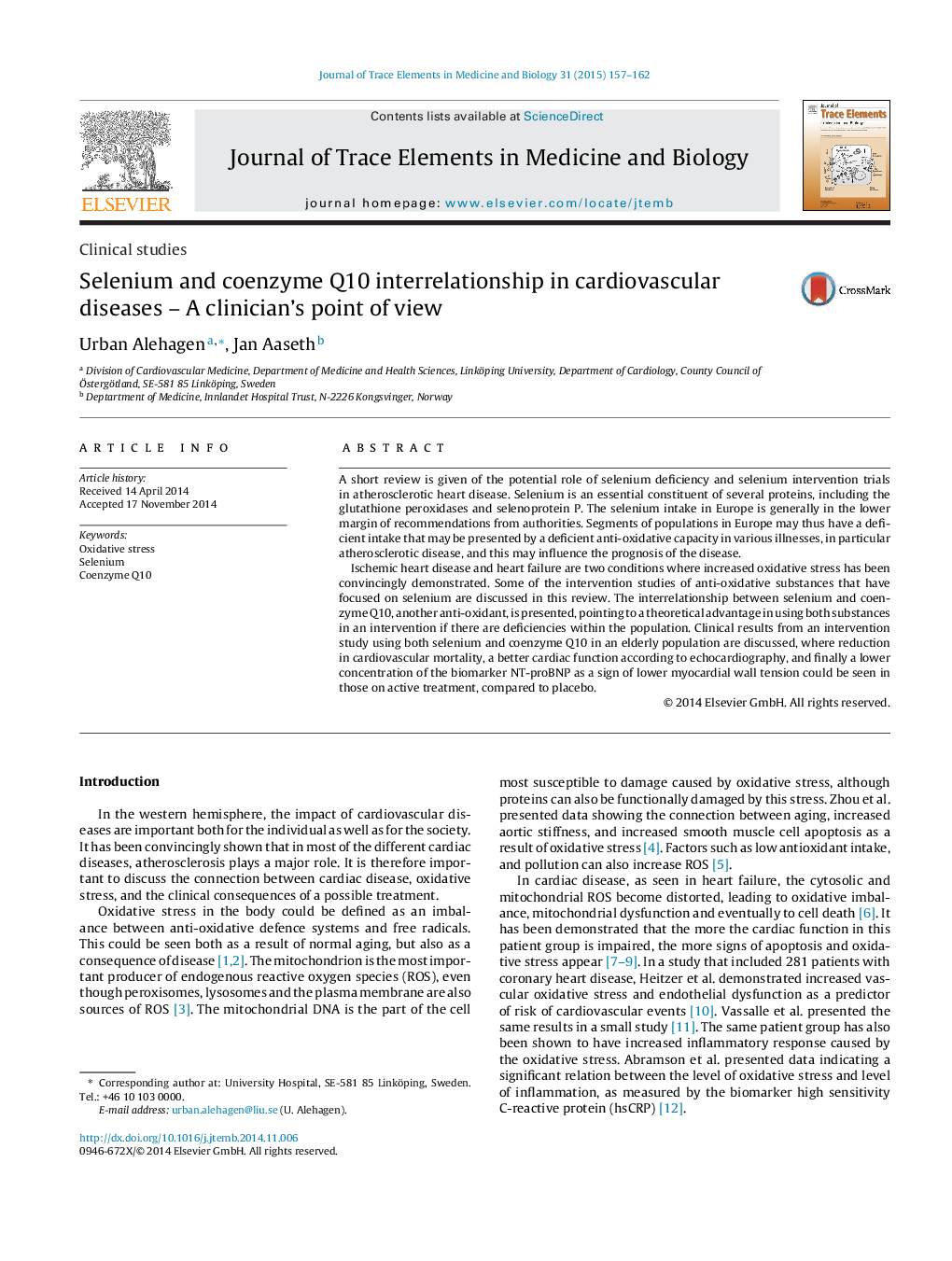| Article ID | Journal | Published Year | Pages | File Type |
|---|---|---|---|---|
| 1226386 | Journal of Trace Elements in Medicine and Biology | 2015 | 6 Pages |
A short review is given of the potential role of selenium deficiency and selenium intervention trials in atherosclerotic heart disease. Selenium is an essential constituent of several proteins, including the glutathione peroxidases and selenoprotein P. The selenium intake in Europe is generally in the lower margin of recommendations from authorities. Segments of populations in Europe may thus have a deficient intake that may be presented by a deficient anti-oxidative capacity in various illnesses, in particular atherosclerotic disease, and this may influence the prognosis of the disease.Ischemic heart disease and heart failure are two conditions where increased oxidative stress has been convincingly demonstrated. Some of the intervention studies of anti-oxidative substances that have focused on selenium are discussed in this review. The interrelationship between selenium and coenzyme Q10, another anti-oxidant, is presented, pointing to a theoretical advantage in using both substances in an intervention if there are deficiencies within the population. Clinical results from an intervention study using both selenium and coenzyme Q10 in an elderly population are discussed, where reduction in cardiovascular mortality, a better cardiac function according to echocardiography, and finally a lower concentration of the biomarker NT-proBNP as a sign of lower myocardial wall tension could be seen in those on active treatment, compared to placebo.
